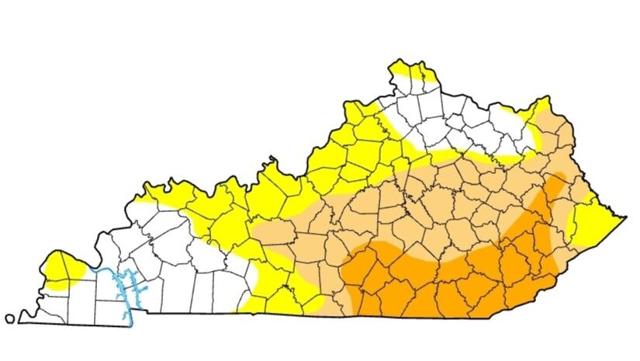Drought conditions worsen in Kentucky
Published 9:30 am Friday, November 17, 2023

- (Photo courtesy of Kentucky Today)
|
Getting your Trinity Audio player ready...
|
Drought conditions have worsened in Kentucky, according to the weekly U.S. Drought Monitor report that was issued Thursday morning and covers the seven-day period that ended on Tuesday morning.
The part of Kentucky that has no drought has shrunk in this latest report, from 31.65% to 27.45%. It includes much of far western Kentucky, as well as parts of the north. The area considered “Abnormally Dry,” or D0 on the scale that runs from D0 to D4 (Exceptional Drought), stands at 26.49%, down from 28.34% last week. That part of the state designated in “Moderate Drought,” or D1, also decreased from a week ago, from 39.83% to 28.61%.
While those reductions may sound encouraging, the loss in all three categories was due to a corresponding increase in the “Severe Drought” category, or D2. That saw a rise from 0.18% in the previous report to 17.45% in the latest Drought Monitor and is in the south and east.
No areas of Kentucky are currently experiencing D3 or D4 conditions. See the map that accompanies this story for the conditions in your county.
Brad Rippey with the U.S. Department of Agriculture says in the Midwest Region, which is where they place Kentucky, “Significant precipitation was limited to parts of the upper Great Lakes region, with the remainder of the Midwest experiencing mild, mostly dry weather. Those conditions were ideal for autumn fieldwork, with the U.S. soybean harvest 95% complete by November 12. In addition, 88% of the nation’s corn had been harvested on that date. However, soil moisture shortages remained a concern for some fall-sown crops, including winter wheat and cover crops.”
Looking ahead, the 6-10-day outlook issued by the National Weather Service’s Climate Prediction center indicates below normal temperatures across Kentucky during that period. Precipitation is forecast to range from near normal in the western half of the state, to slightly above normal in the east. For the following week, below normal temperatures and below normal precipitation are expected statewide.
The U.S. Drought Monitor is produced through a partnership between the National Drought Mitigation Center at the University of Nebraska-Lincoln, the U. S. Department of Agriculture, and the National Oceanographic and Atmospheric Administration (NOAA).





